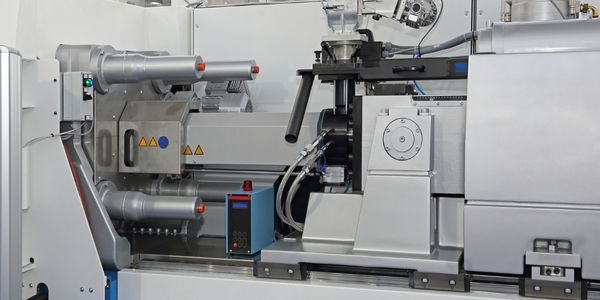Download PDF
Enabling sparkling customer service by improving back-office performance
Technology Category
- Infrastructure as a Service (IaaS) - Cloud Storage Services
- Infrastructure as a Service (IaaS) - Hybrid Cloud
- Infrastructure as a Service (IaaS) - Private Cloud
Applicable Functions
- Discrete Manufacturing
- Sales & Marketing
Use Cases
- Inventory Management
- Manufacturing System Automation
Services
- Cloud Planning, Design & Implementation Services
- System Integration
The Challenge
Hansgrohe SE, a market-leading sanitary fittings manufacturer, faced challenges after expanding its business operations into emerging global markets, particularly in Asia. The company struggled to provide top-notch support to an ever-increasing number of customers without letting costs spiral out of control. Previously, Hansgrohe’s integrated SAP applications were running on Oracle databases. As the firm expanded, the existing environment struggled to deliver the required performance, and licensing costs increased sharply when the business needed to scale up.
About The Customer
Hansgrohe SE is a market-leading sanitary fittings manufacturer, headquartered in Schiltach, Germany. The company operates ten production sites and offices in 44 countries, making it one of the few global players in the sanitation industry. Employing over 3,500 people, Hansgrohe generated total revenue of EUR841.4 million in 2013. After expanding its business operations into emerging global markets, particularly in Asia, Hansgrohe struggled to provide top-notch support to an ever-increasing number of customers without letting costs spiral out of control.
The Solution
After evaluating offerings from a range of providers, Hansgrohe decided to deploy IBM DB2 and two IBM Power 770 servers, each with 36 IBM POWER7+™ processor cores and 1 TB main memory, connected to two virtualized IBM Storwize V7000 storage systems. In close collaboration with IBM, Hansgrohe migrated its SAP Business Warehouse and SAP ERP applications from Oracle Database to IBM DB2 running on IBM AIX. The firm also profits from improved business continuity delivered by IBM PowerHA® SystemMirror® for AIX. The company now also runs VMware, Windows and Linux on System x.
Operational Impact
Quantitative Benefit
Related Case Studies.

Case Study
Plastic Spoons Case study: Injection Moulding
In order to meet customer expectations by supplying a wide variety of packaging units, from 36 to 1000 spoons per package, a new production and packaging line needed to be built. DeSter wanted to achieve higher production capacity, lower cycle time and a high degree of operator friendliness with this new production line.

Case Study
Robot Saves Money and Time for US Custom Molding Company
Injection Technology (Itech) is a custom molder for a variety of clients that require precision plastic parts for such products as electric meter covers, dental appliance cases and spools. With 95 employees operating 23 molding machines in a 30,000 square foot plant, Itech wanted to reduce man hours and increase efficiency.

Case Study
Fully Automated Visual Inspection System
Tofflon has developed a fully automatic machine that uses light to inspect vials, medicine bottles, or infusion containers for glass fragments, aluminum particles, rubber grains, hairs, fibers, or other contaminants. It also detects damaged containers with cracks or inclusions (microscopic imperfections), automatically removing faulty or contaminated products. In order to cover all production processes for freeze-dried pharmaceuticals, Tofflon needed to create an open, consistent, and module-based automation concept.

Case Study
Hospital Inventory Management
The hospital supply chain team is responsible for ensuring that the right medical supplies are readily available to clinicians when and where needed, and to do so in the most efficient manner possible. However, many of the systems and processes in use at the cancer center for supply chain management were not best suited to support these goals. Barcoding technology, a commonly used method for inventory management of medical supplies, is labor intensive, time consuming, does not provide real-time visibility into inventory levels and can be prone to error. Consequently, the lack of accurate and real-time visibility into inventory levels across multiple supply rooms in multiple hospital facilities creates additional inefficiency in the system causing over-ordering, hoarding, and wasted supplies. Other sources of waste and cost were also identified as candidates for improvement. Existing systems and processes did not provide adequate security for high-cost inventory within the hospital, which was another driver of cost. A lack of visibility into expiration dates for supplies resulted in supplies being wasted due to past expiry dates. Storage of supplies was also a key consideration given the location of the cancer center’s facilities in a dense urban setting, where space is always at a premium. In order to address the challenges outlined above, the hospital sought a solution that would provide real-time inventory information with high levels of accuracy, reduce the level of manual effort required and enable data driven decision making to ensure that the right supplies were readily available to clinicians in the right location at the right time.

Case Study
SAP Leonardo Enabling Rocket Science
At times, ULA has as many as 15 different operating systems dedicated to overlapping processes, such as rocket design, testing, and launch. Multiple systems created unnecessary costs and unwanted confusion among workers at offices, factories, and launch sites in different location. In order to improve collaboration and transparency during vital activities that directly influence mission success, ULA wanted to improve data sharing and streamline manufacturing processes.






